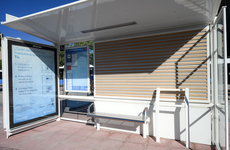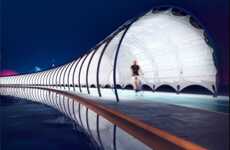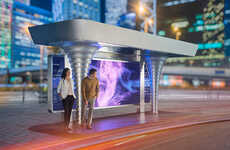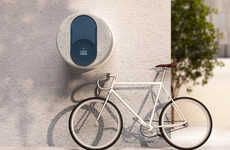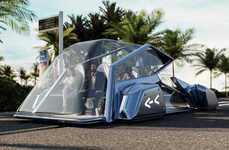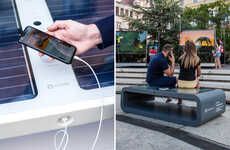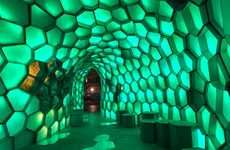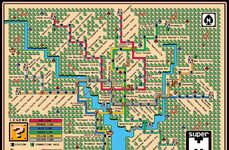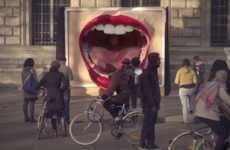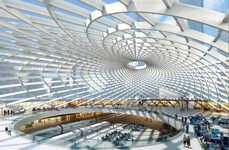
This Detroit LED Bus Stop Generates Energy from Pedestrian Pacing
Amelia Roblin — September 3, 2012 — Autos
References: behance.net
A low-tech transit refuge is certainly a lower cost option, but this Detroit LED Bus Stop proposal demonstrates that hi-tech features might not require added funds. The illumination and the digital signage that this bus shelter offers does not need to leech power out of the urban grid.
Guercy Eugene's concept extends beyond the single rear wall and the roof of the structure and incorporates the surrounding sidewalk for its purposes. By a scheme of Pad Feedback, the designer suggests that the kinetic energy of people's shoes against the concrete can be absorbed and transformed into electricity.
This power would allow the Detroit LED Bus Stop to be illuminated all night for safety. It would also keep a lit-up a list of upcoming transit stops and communicate important information to passengers.
Guercy Eugene's concept extends beyond the single rear wall and the roof of the structure and incorporates the surrounding sidewalk for its purposes. By a scheme of Pad Feedback, the designer suggests that the kinetic energy of people's shoes against the concrete can be absorbed and transformed into electricity.
This power would allow the Detroit LED Bus Stop to be illuminated all night for safety. It would also keep a lit-up a list of upcoming transit stops and communicate important information to passengers.
Trend Themes
1. Low-tech Transit Refuges - Innovative bus stop designs that incorporate low-cost, low-energy features for added functionality and sustainability.
2. Energy-harvesting Technology - Utilizing kinetic energy from human movement to power various devices and infrastructures, reducing reliance on conventional energy sources.
3. Smart City Infrastructure - Integrating digital signage, sensors, and renewable energy solutions into urban environments to enhance public transportation and communication systems.
Industry Implications
1. Urban Design and Architecture - Opportunities for designers and architects to create innovative and sustainable bus shelters that incorporate energy-harvesting technologies.
2. Renewable Energy - Companies specializing in energy-harvesting technologies can explore partnerships and solutions to power smart city infrastructures.
3. Smart Transportation - Providers of smart transportation solutions can develop integrated systems that leverage renewable energy and digital signage for enhanced passenger experience.
3.7
Score
Popularity
Activity
Freshness


